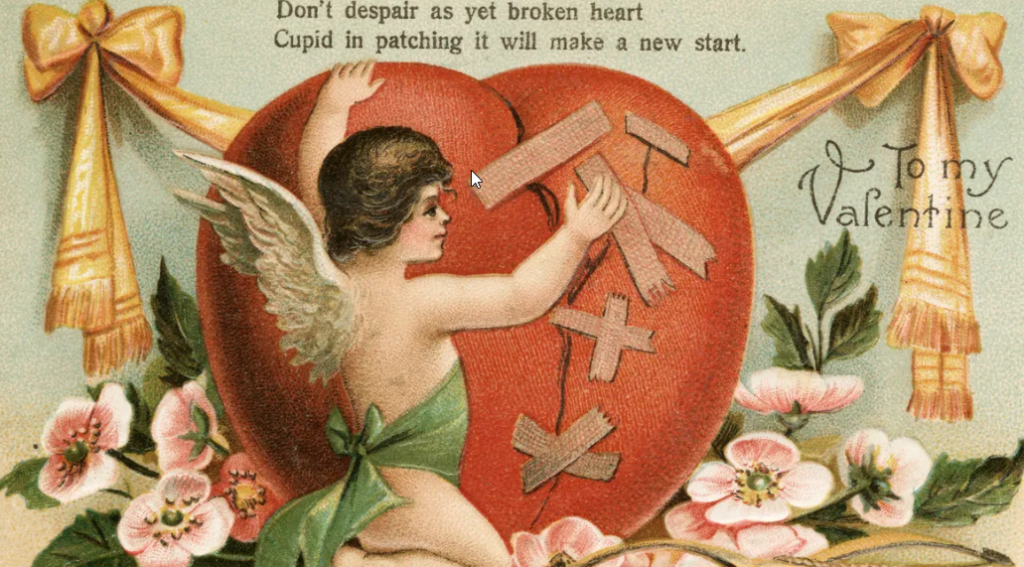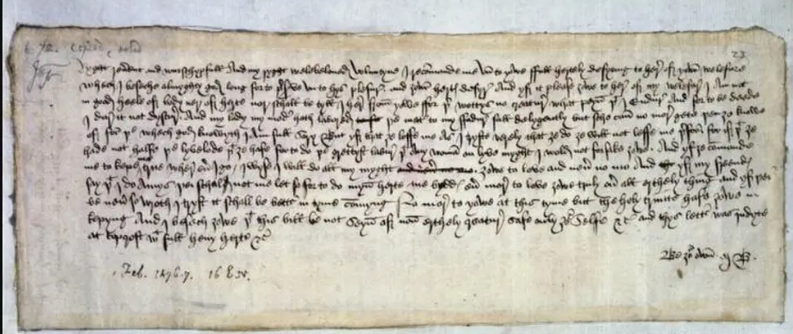
Valentine’s Day is celebrated on February 14. It is a festival of romantic love and many people give cards, letters, flowers or gifts to their spouse or partner. They can also arrange a romantic meal at a restaurant or a night at a hotel. Common symbols of Valentine’s Day are hearts, red roses and Cupid.
Whether you love Valentine’s Day or hate it, one thing is clear: the history of Valentine’s Day goes back a long way. And while Valentine’s Day is now known for kissing, Valentine’s Day gifts, and dinner, the holiday’s origins are far less romantic. Here, the history of Valentine’s Day that wouldn’t make it into a rom-com, including a saint, a massacre, and even a sinful Valentine’s Day nun (seriously!).
Table of Contents
When is Valentine’s Day?
Valentine’s Day occurs annually on February 14. In 2025, it will be celebrated on Friday, February 14.
Valentine’s Day Dates
| Year | Valentine’s Day |
|---|---|
| 2025 | Friday, February 14 |
| 2026 | Saturday, February 14 |
| 2027 | Sunday, February 14 |
| 2028 | Monday, February 14 |
In the late 5th century, Pope Gelasius declared February 14th to be Saint Valentine’s Day, and ever since, February 14th has been a day of celebration—though it was usually more religious than romantic.
How did Valentine’s Day start?

Valentine’s Day is a fixed day on the calendar that was incorporated into the mid-February holiday called Lupercalia in the ancient Roman calendar — which some historians believe led to Valentine’s Day being about love. Lupercalia celebrated fertility, and may have included a ritual in which men and women were paired by choosing names from a jar. In ancient Greece, people celebrated the wedding of the god Zeus and the goddess Hera in midwinter.
Celebrating a special Valentine’s Day is a very old tradition that is believed to have originated from a Roman festival.
The Romans celebrated a festival called Lupercalia in mid-February – officially the beginning of their spring – and the occasion was marked by many different rituals.
One belief is that as part of the celebrations, boys would draw girls’ names from a box.
They would become boyfriends and girlfriends during the festival and sometimes even get married. However, it is not known if this is actually true.
Later, the church wanted to turn the festival into a Christian celebration and decided to use it to commemorate Saint Valentine as well.
Gradually, the name Saint Valentine began to be used by people to express their feelings to the ones they loved.
Why is Valentine’s Day celebrated on February 14th?

In general, early Christians often chose to celebrate holidays on days that coincided with existing festivals and celebrations (such as Christmas and the Winter Solstice), so they placed Valentine’s Day on February 14, while Lupercalia was celebrated on February 15.
Who was Saint Valentine?

The day is named after a famous saint, but we don’t really know who Valentine was.
There are many stories about him, and they are all very different.
One popular belief about Saint Valentine is that he was a priest in Rome in the 3rd century AD.

Emperor Claudius II and his army were involved in many battles, but he believed that married Roman men didn’t make very good soldiers because they weren’t willing to go to war and leave their wives and families behind.
The ruler decided to ban marriage, a move that Valentine considered unfair, so he broke the law and performed weddings in secret.
When Claudius found out, Valentine was imprisoned and sentenced to death.
Legend has it that he fell in love with the jailer’s daughter and when he was taken to be executed on February 14, he sent her a love letter signed “From Your Valentine.”
Other accounts suggest that Saint Valentine was killed for trying to help Christians who were being mistreated during the reign of Emperor Claudius II escape from Roman prisons.
Because of this legend, Saint Valentine is known as the patron saint of love. The Saint Valentine Prayer asks Saint Valentine to unite lovers, so that the two may become one, and the couple may remember their devotion to God.
While the story of Saint Valentine laid the foundation for establishing the day as a holiday of romantic love, what really solidified the connection between Saint Valentine and love was a poem by the medieval writer Geoffrey Chaucer in 1375, which historians consider the origin of the “modern” Valentine’s Day celebration, where we celebrate our romantic partnership with another person.
Why is Valentine’s Day celebrated on February 14th?
In general, early Christians often chose to celebrate holidays on days that coincided with existing festivals and celebrations (such as Christmas and the Winter Solstice), so they placed Valentine’s Day on February 14, while Lupercalia was celebrated on February 15.
Why do we celebrate Valentine’s Day?
The truth about Valentine’s Day history is that the romantic holiday is not immune to tragedy. During Prohibition in Chicago, seven people were murdered on February 14, 1929, by a gang led by Al Capone. The Valentine’s Day massacre became a flashpoint in the history of Prohibition, as police and law enforcement cracked down on gangs and mobs that had formed in cities to control then-illegal substances like alcohol.
What is the meaning of Valentine’s Day?
For years (and centuries), Valentine’s Day has been a religious celebration, an ancient ritual, and a commercial holiday. All of this change means that Valentine’s Day can really mean whatever you want it to: You can skip the celebrations altogether, buy yourself some chocolate or flowers, or express your love and appreciation for the people in your life, whether they’re co-workers, romantic partners, friends, or family members.
Valentine’s Day fun facts
Valentine’s Day is one of the most popular days to propose. (In fact, if you got engaged between December and February, you’ll be in the zone when the most proposals will come.)
If you don’t make a big deal about Valentine’s Day, you’re not alone. A YouGov survey found that only 30% of Americans thought it was a truly special occasion—most people prefer holidays like New Year’s Eve, Halloween, Labor Day, and Memorial Day over the day of love.
The color red and the heart shape first started appearing in medieval art during the 14th and 15th centuries.
Valentine’s Day Poetry and Quotes
One Hundred Love Sonnets: XVII
By Pablo Neruda
I don’t love you as if you were a rose of salt, topaz,
or arrow of carnations that propagate fire:
I love you as one loves certain obscure things,
secretly, between the shadow and the soul.
I love you as the plant that doesn’t bloom but carries
the light of those flowers, hidden, within itself,
and thanks to your love the tight aroma that arose
from the earth lives dimly in my body.
She Walks in Beauty
By Lord Byron (George Gordon)
She walks in beauty, like the night
Of cloudless climes and starry skies;
And all that’s best of dark and bright
Meet in her aspect and her eyes.
[i carry your heart with me(i carry it in]
by e.e. cummings
i carry your heart with me(i carry it in
my heart)i am never without it(anywhere
i go you go,my dear;and whatever is done
by only me is your doing,my darling).
First Love
by John Clare
I ne’er was struck before that hour
With love so sudden and so sweet,
Her face it bloomed like a sweet flower
And stole my heart away complete.
Valentine’s Day Sweets
Valentine’s Day goes hand in hand with sweets, so why not try our delicious Valentine’s Day recipes? For chocolate lovers, check out our best chocolate dessert recipes. We’ve tested and created all of these chocolate recipes ourselves. (Someone had to do it!).
Valentine’s Day Flowers
Red roses are a popular flower for lovers because they symbolize love. Or, be different! Check out our list of flower symbols and find a meaning that suits your loved one.
Or, consider giving the gift of seeds! Here’s a list of stunning flowers with romantic names and flowers for “creating a romantic garden.”
How to Celebrate Valentine’s Day 2025
Valentine’s Day 2025 falls on Friday, February 14th. Whether you’re planning a romantic evening, a fun outing with friends, or simply want to do something special for yourself, the day offers plenty of opportunities for celebration. Here are a few ideas to make the most of the occasion:
Romantic Ideas:
- Dinner Date: Treat your significant other to a fancy dinner at a nice restaurant, or if you prefer a more intimate setting, cook a special meal at home.
- Weekend Getaway: A short trip to a cozy cabin, a scenic destination, or even a staycation in your own city could make for a memorable experience.
- Thoughtful Gifts: Consider something personalized, like custom jewelry, a heartfelt handwritten letter, or an experience (e.g., a cooking class or concert tickets).
- Spa Day: Relax and unwind together with a couple’s spa treatment, complete with massages, facials, and time to enjoy each other’s company.
Fun & Lighthearted Celebrations:
- Galentine’s Day: Celebrate your friendships with a “Galentine’s” brunch or dinner, a popular tradition inspired by Parks and Recreation.
- DIY Gifts: Make your own cards, chocolates, or even a scrapbook that celebrates your relationships, whether romantic or platonic.
- Movie Marathon: Watch romantic comedies, love stories, or even a “Valentine’s Day”-themed movie marathon with friends or family.
Solo Celebrations:
- Self-Care: Pamper yourself with a day focused on relaxation—perhaps a bubble bath, your favorite comfort food, and indulging in something you love.
- Exploring New Hobbies: If you’re single, Valentine’s Day can be an excellent opportunity to invest time in something new—maybe a cooking class, painting, or even a solo trip.
Whether you’re celebrating love with someone special, friends, or just appreciating yourself, Valentine’s Day is a great time to embrace the idea of connection in all its forms! How are you planning to spend the day?
Valentine’s Day traditions and superstitions
Giving and receiving gifts on Valentine’s Day has long been a tradition, going back to Saxon England. It wasn’t long before greeting cards were introduced, and the tradition of anonymous Valentine cards or notes became popular. In Victorian England, cards were incredibly delicate, laced with paper and ribbon, often with hidden panels that held secret notes. It is also believed that in the Middle Ages, young men and women would choose names from a bowl and that name would be their Valentine, which they would wear on their sleeves. There are many customs and traditions surrounding this romantic day, however, the most common and most practiced is gift-giving.
Happy Valentine’s Day from all of us at The Old Farmer’s Almanac!